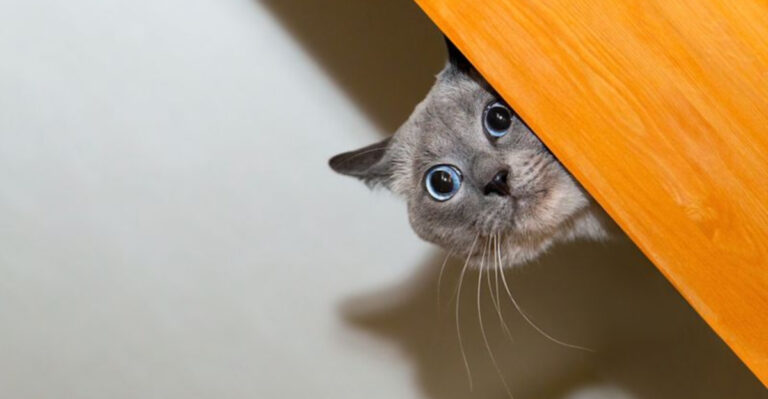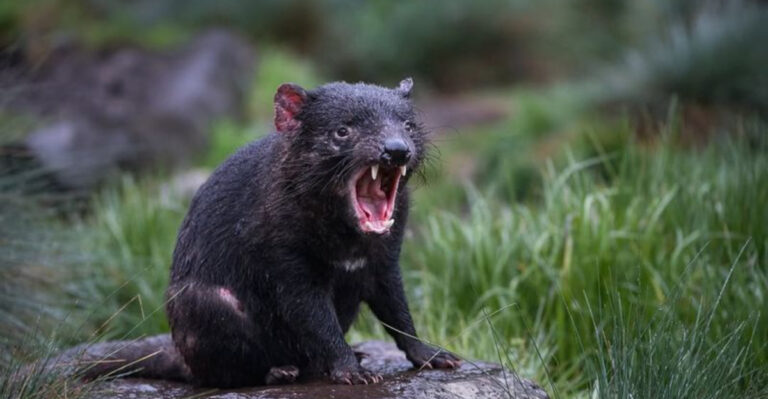16 Creatures You’d Never Guess Can Fly
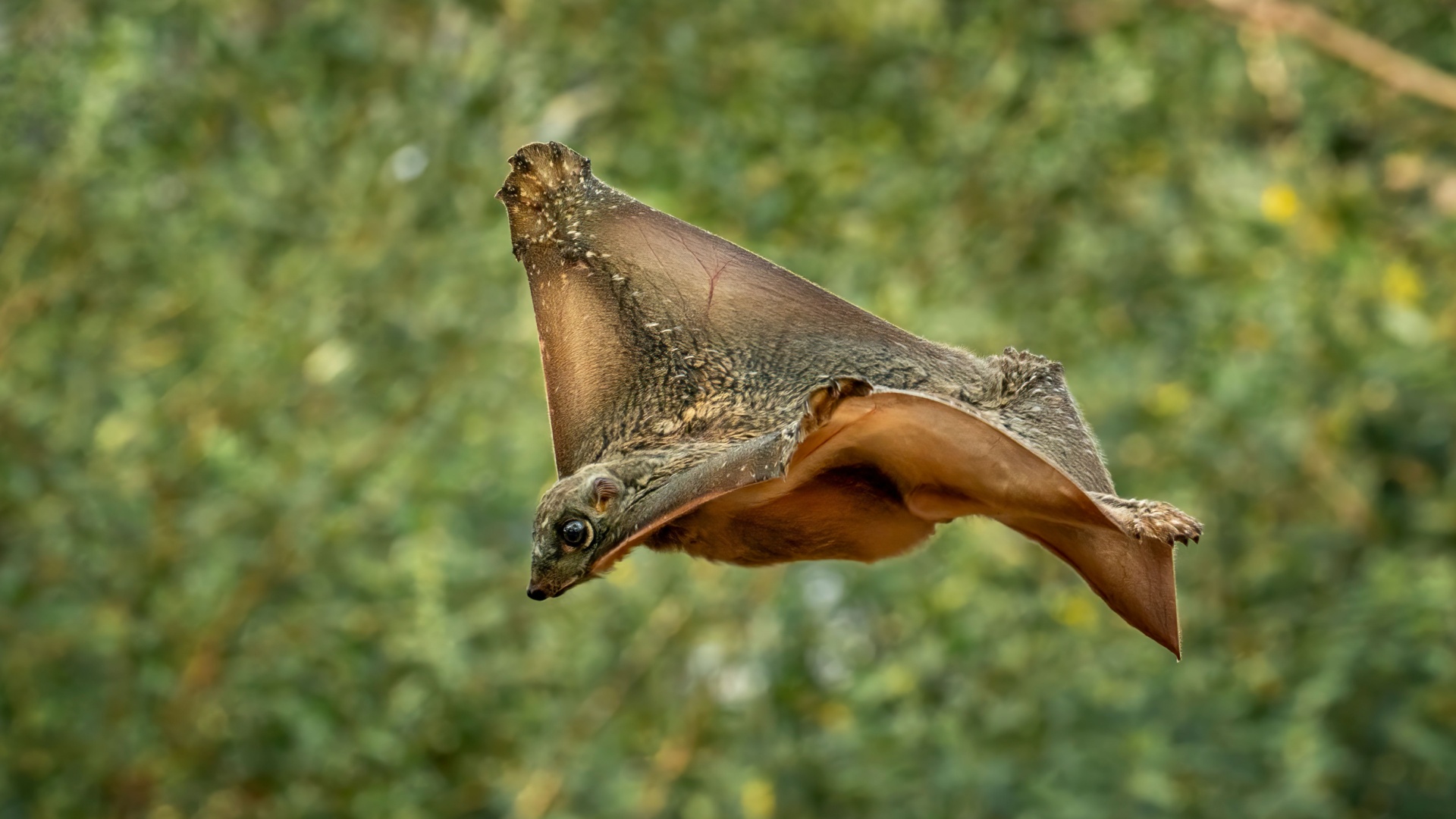
When we think of flying creatures, our minds often flutter to birds, bats, or insects. However, the animal kingdom is full of surprises, boasting a diverse array of unexpected flyers that defy gravity in astonishing ways.
From the forests to the oceans, these remarkable creatures have evolved unique methods of taking to the skies. Let’s explore these incredible aerial acrobats that might just leave you flabbergasted.
1. Flying Fish
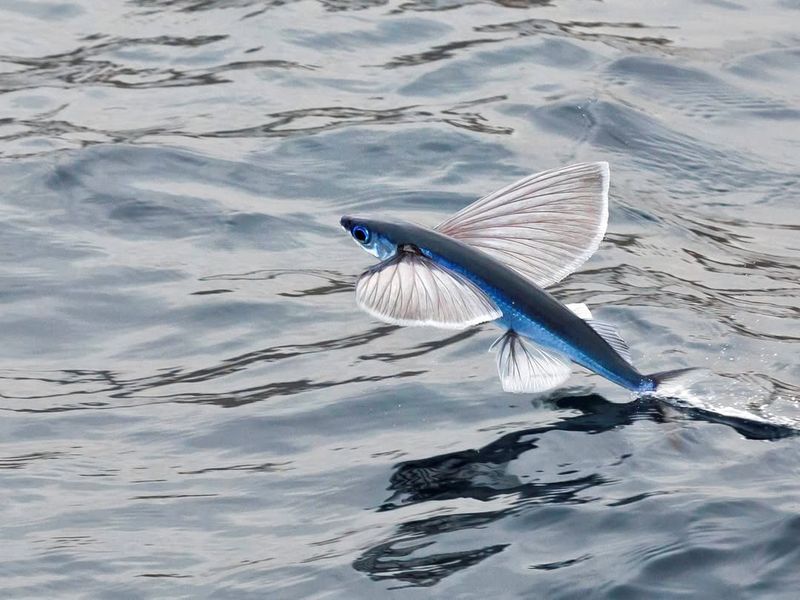
In the realm of the unexpected, the flying fish steals the show. Leaping out from the ocean, these fish glide above the waves using their uniquely adapted fins.
While not true fliers, their aerial journey can reach impressive distances. Their journey is not about the destination, but rather the escape from predators lurking beneath.
Nature has equipped these fish with a temporary escape plan that works wonders.
2. Gliding Frog
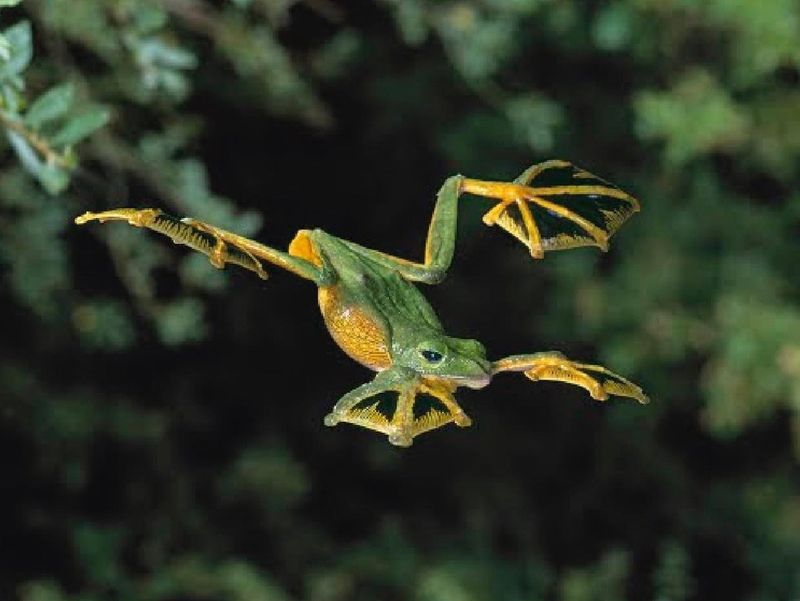
Hidden within tropical rainforests, the gliding frog showcases its acrobatic skills. With their webbed feet acting like tiny parachutes, they leap gracefully from tree to tree.
These frogs are masters of disguise, blending with the lush greenery. Their flights are short but are essential for escaping predators or finding new habitats.
Despite their small size, their daring leaps are truly a spectacle.
3. Squirrel Glider
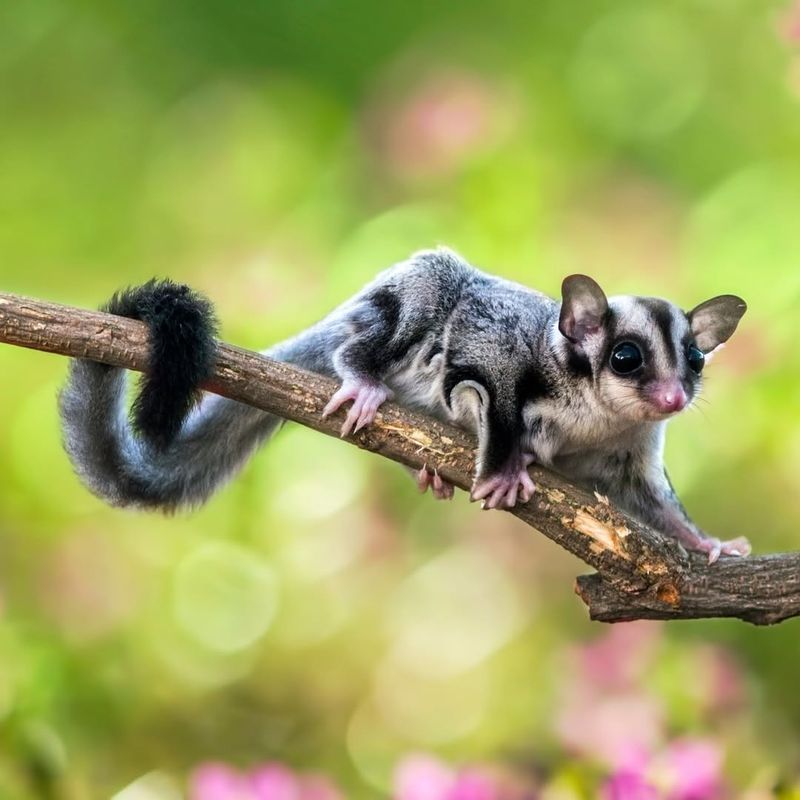
In the moonlit forests of Australia, squirrel gliders perform nocturnal ballets. With a membrane stretching from wrist to ankle, they glide effortlessly between trees.
These small marsupials are night-time explorers, seeking food and companionship. Their silent flights keep them hidden from predators and help them traverse their arboreal homes with ease.
Not just small squirrels, these gliders are nature’s trapeze artists.
4. Flying Lemur
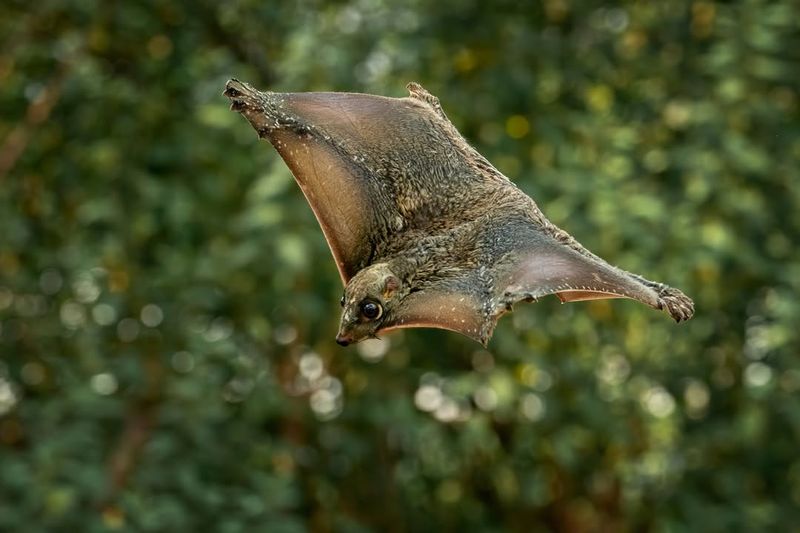
The flying lemur, or colugo, might just redefine what it means to fly. Despite its name, it’s not a true lemur nor a true flyer, but its gliding prowess is unmatched.
Using a large membrane, it gracefully travels between trees, covering distances up to 100 meters. Its ability to glide isn’t just for show; it helps avoid ground predators.
This creature is a marvel of adaptation, perfect for forest living.
5. Draco Lizard
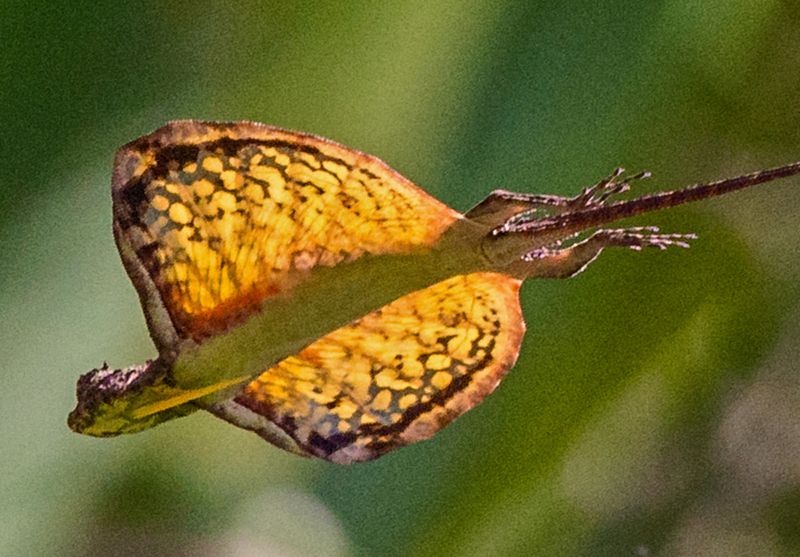
The draco lizard, a small marvel, turns heads with its rib-extended wings. Found in Southeast Asia, this lizard glides to escape threats and find food.
Its colorful flaps are not just for show; they are essential for balance and flight. Agile and swift, it maneuvers through the forest with ease.
Witnessing this lizard in motion feels like watching nature’s own miniature dragon take flight.
6. Flying Squid
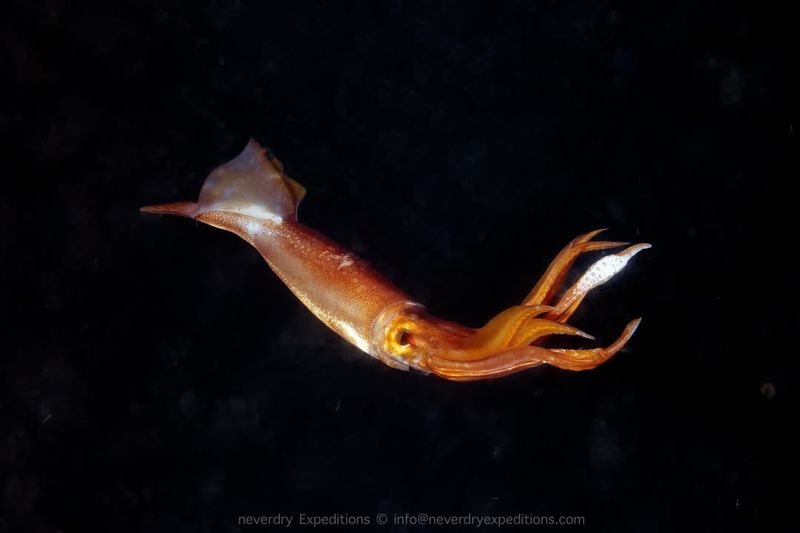
In oceanic theaters, the flying squid takes center stage. These cephalopods shoot themselves out of the water using jet propulsion.
Once airborne, their tentacles spread wide, allowing them to glide over the ocean surface. This spectacle isn’t just for entertainment; it’s a survival tactic to evade predators.
With a dance that’s both surprising and strategic, the flying squid’s flight is a testament to nature’s ingenuity.
7. Flying Snake
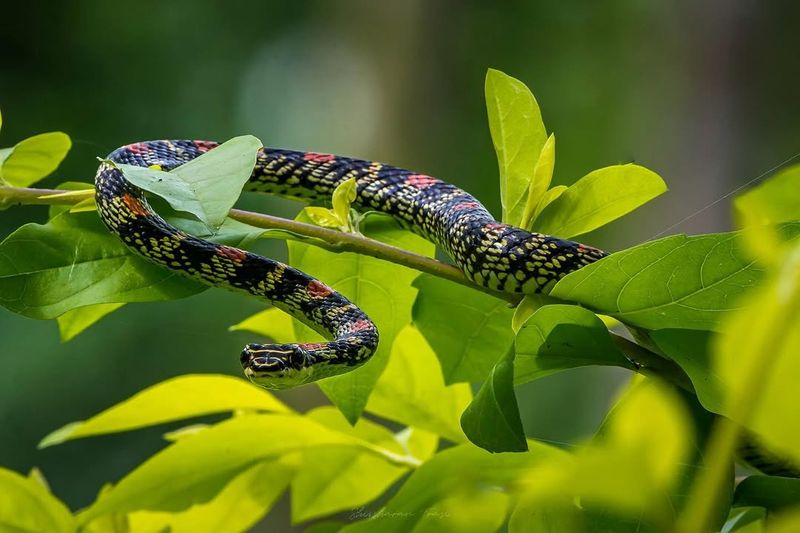
Flying snakes redefine slithering with their aerial displays. Found in Southeast Asia, these snakes flatten their bodies and undulate mid-air for controlled glides.
Their flights can span significant distances, navigating the dense jungle with precision. These snakes aren’t just impressive in their ground movement; their ability to glide offers a fascinating glimpse into adaptive evolution.
A sight both thrilling and mesmerizing, flying snakes showcase nature’s creativity.
8. Gliding Ant
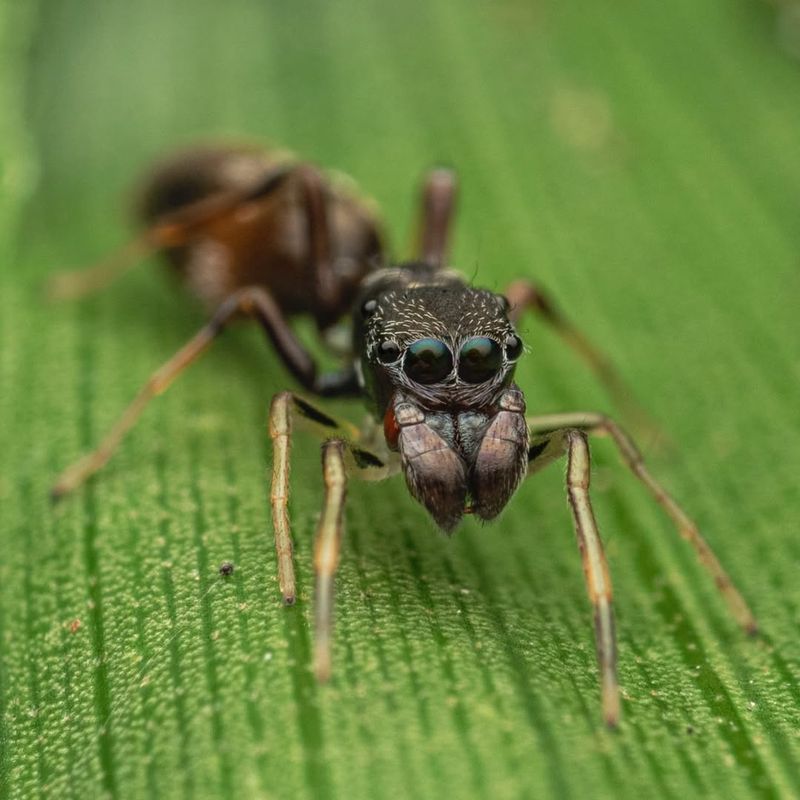
In the insect world, gliding ants are the skydivers. Leaping from high forest canopies, they navigate the air using their bodies to steer towards targets.
Their aerial acrobatics are a strategic escape from predators and a way to return to home bases on trees.
Despite their tiny size, their aerial maneuvers are precise and calculated, showcasing a level of sophistication often overlooked in the insect kingdom.
9. Flying Gecko
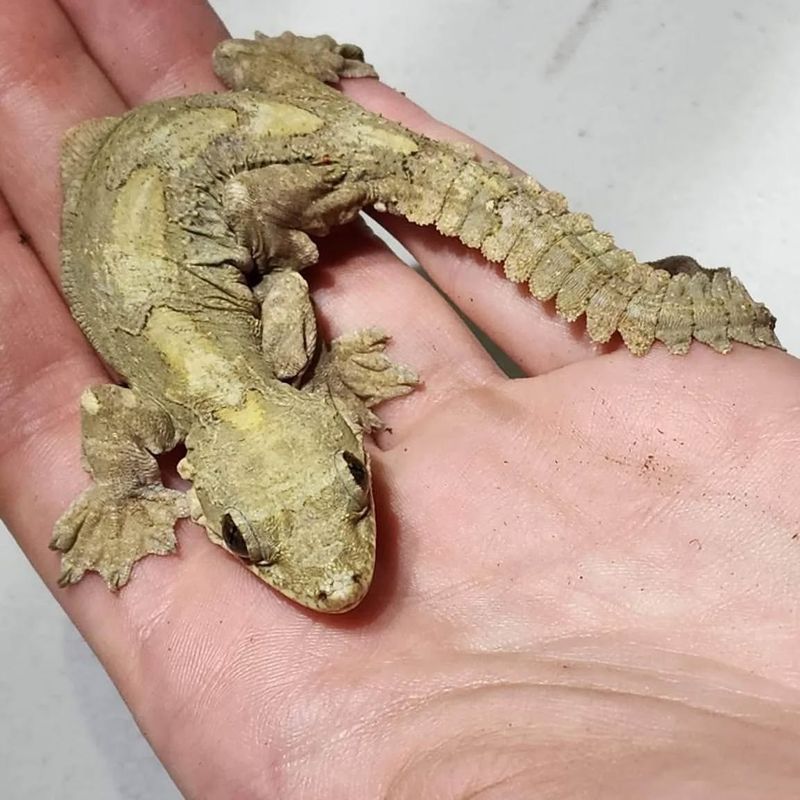
Flying geckos, with their webbed feet and tails, are masters of disguise and flight. Found in Asia, their textured skin blends seamlessly with tree bark.
These geckos glide to escape predators or to find mates, with their flights being short but effective. Nature has equipped them with the perfect tools for survival.
Their ability to vanish in plain sight and then take flight is truly remarkable.
10. Flying Squirrel
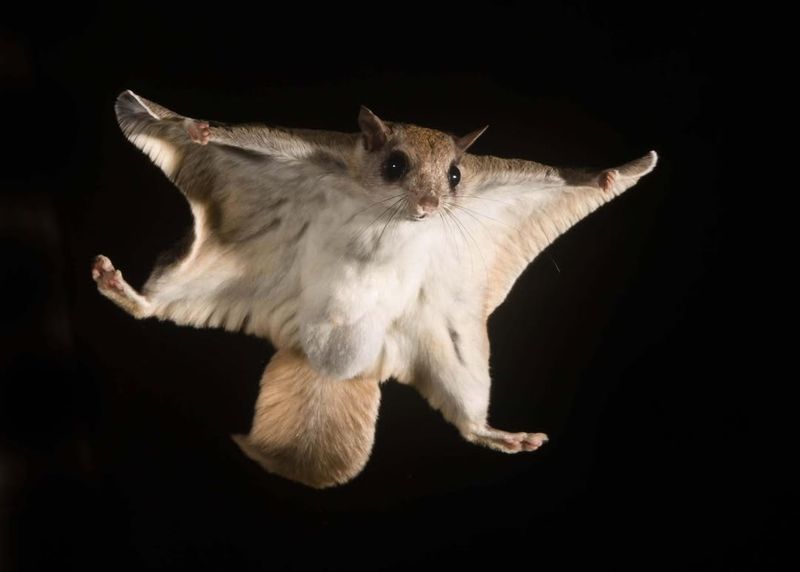
Flying squirrels transform our understanding of tree-to-tree travel. By night, they glide using a furry membrane connecting their limbs.
These nocturnal navigators are adept at avoiding predators while searching for food. Their glides are silent, swift, and precise, providing both safety and efficiency.
In the often-quiet world of the forest, flying squirrels add a touch of excitement and mystery with their aerial escapades.
11. Flying Tree Frog
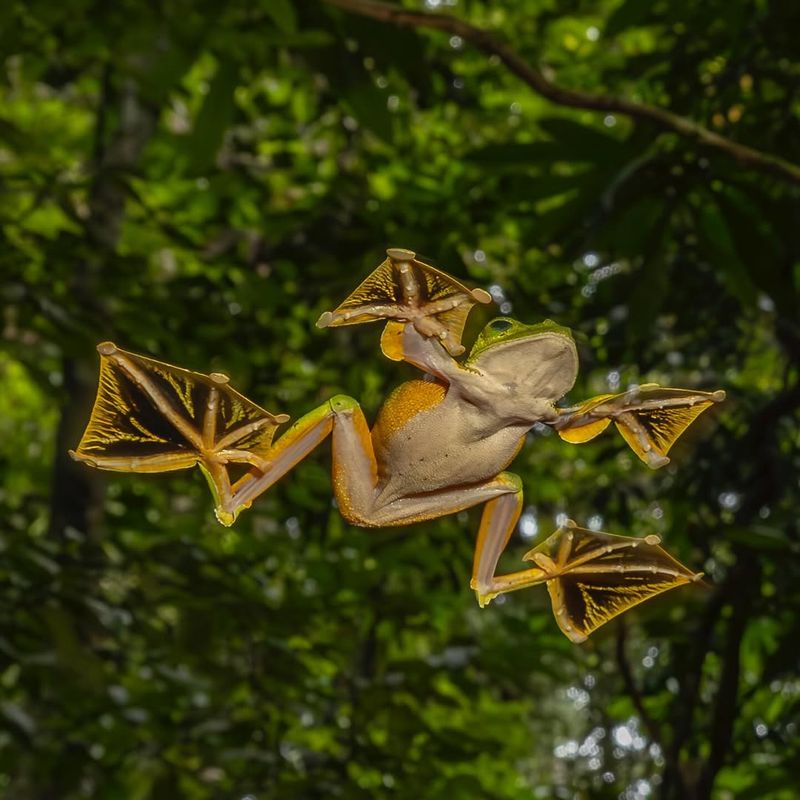
Within the vibrant rainforests, the flying tree frog leaps not just to move, but to glide. Its webbed feet spread wide, catching air and allowing graceful descent.
These frogs are not only colorful but also clever, using flight to avoid ground dangers. Their short, controlled flights are a survival tool, ensuring they stay one jump ahead of their predators.
A true testament to the art of leaping.
12. Flying Fox
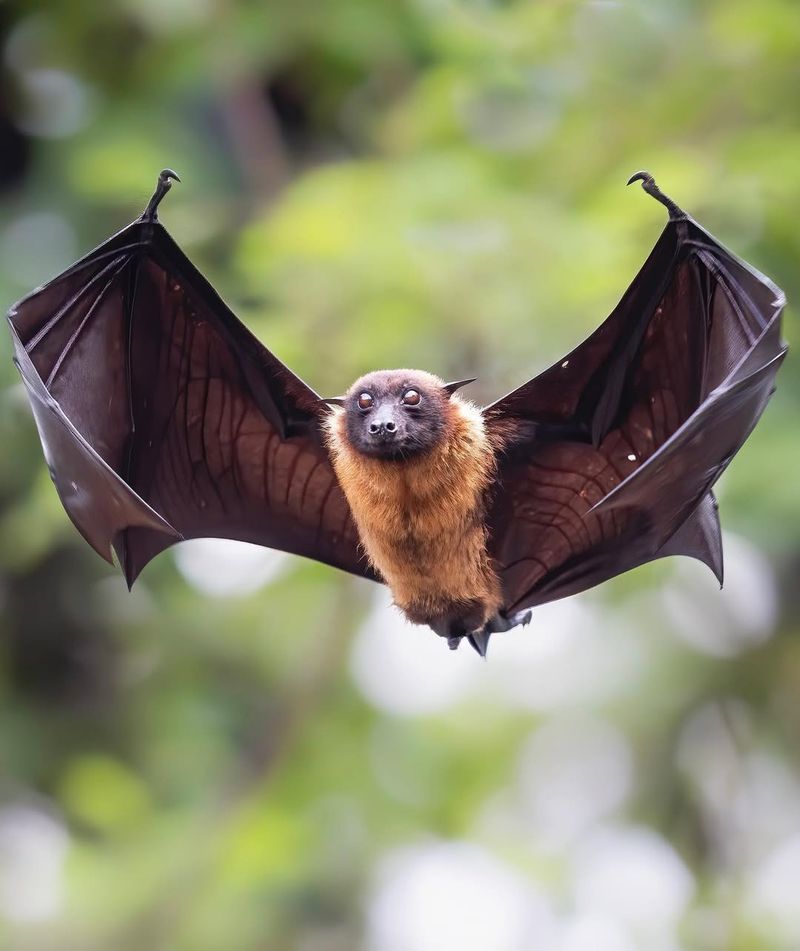
Flying foxes, the giants of the bat world, take flight at dusk in search of fruit and nectar. Their massive wingspan makes them graceful fliers.
They play a crucial role in pollination and seed dispersal, ensuring forest regeneration. Despite their eerie name, these bats are gentle giants, contributing to the ecosystem with every flight.
Watching them soar is like witnessing nature’s harmony in motion.
13. Sifaka
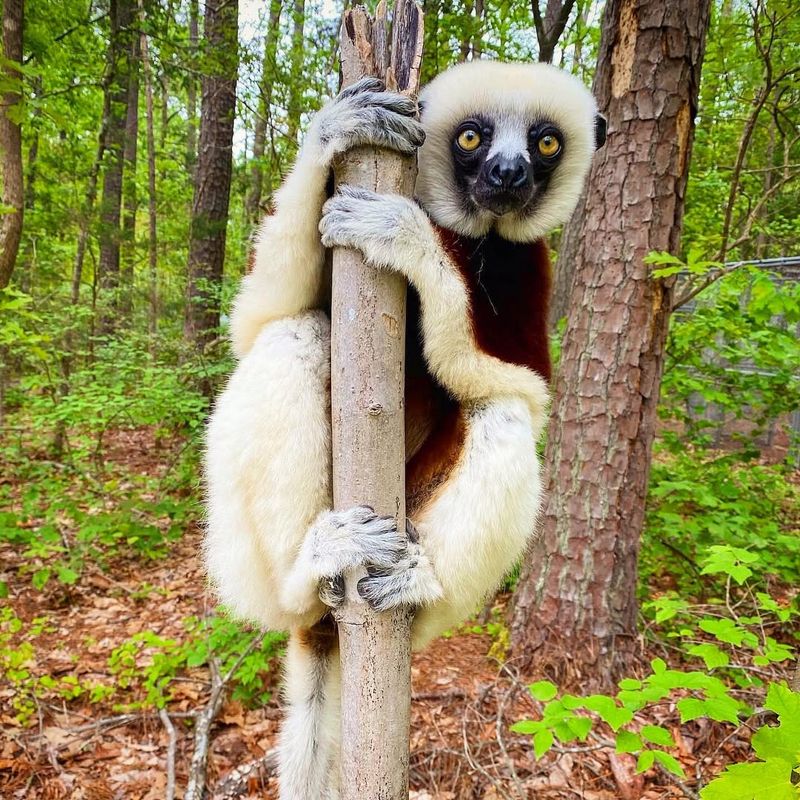
Bounding effortlessly through Madagascar’s treetops, this agile primate relies on powerful hind legs to leap more than 30 feet in a single bound.
The sifaka doesn’t fly in the traditional sense, but its airborne leaps between branches appear almost like gliding. On the forest floor, it adopts a quirky, upright hopping gait that’s just as fascinating to watch.
With outstretched arms for balance, it moves with grace through the canopy, leaving onlookers amazed by its athleticism.
14. Kite Spider
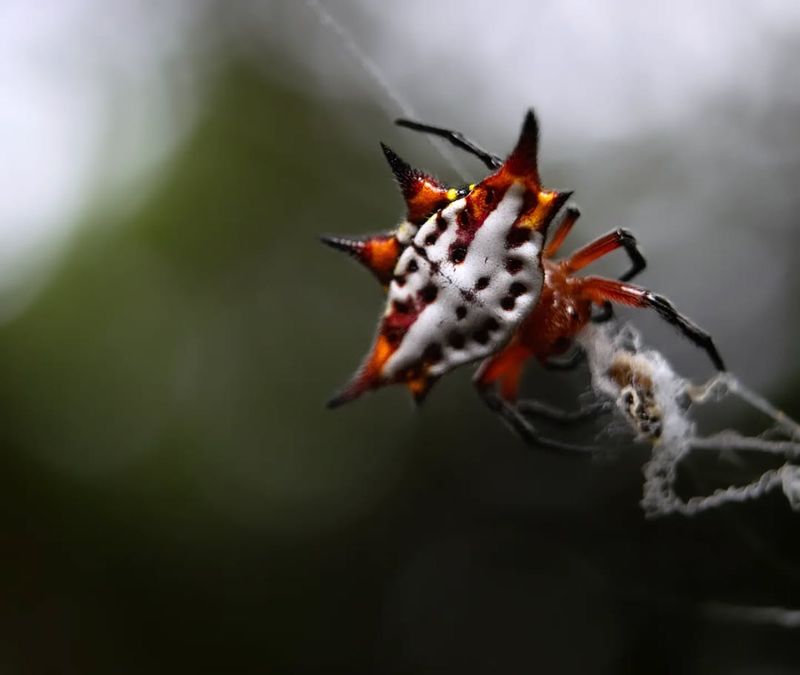
The kite spider is a master of silk-powered movement through the air. It releases long threads of silk that catch the wind, allowing it to glide between treetops.
This technique helps the spider escape predators and explore new areas without ever touching the ground.
While it doesn’t have wings, the kite spider’s airborne travel is a remarkable feat of natural engineering.
15. Flying Ant
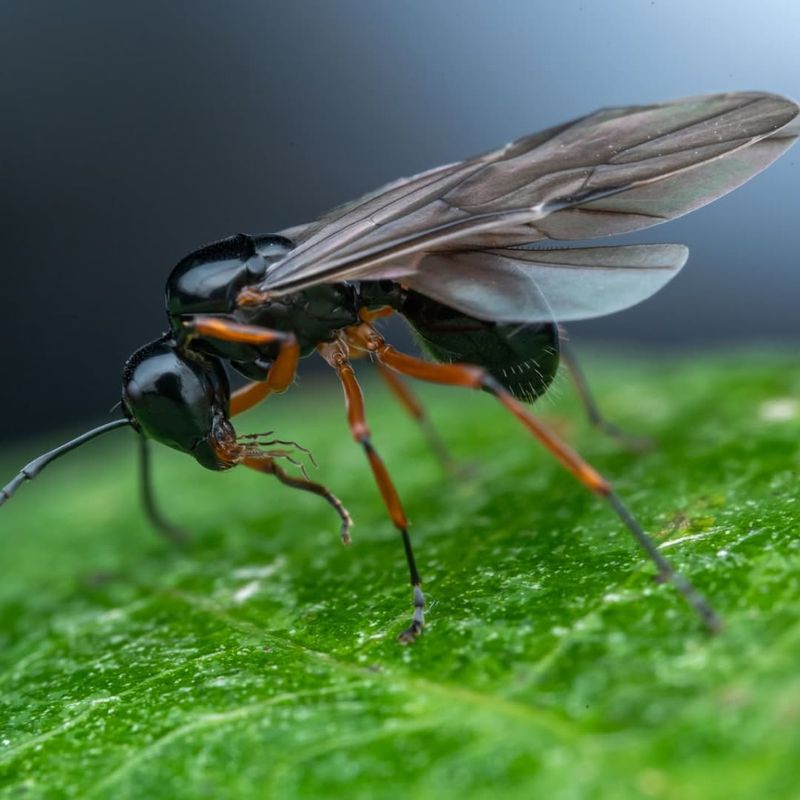
Flying ants appear during their brief reproductive phase, taking to the skies in a coordinated event called a nuptial flight.
Winged males and queens fill the air in large numbers, creating a spectacular display as they seek to mate. After this short airborne journey, males usually perish, while fertilized queens descend to begin new colonies.
Though often mistaken for other insects, flying ants play a vital role in the life cycle and spread of ant populations.
16. Mobula Ray
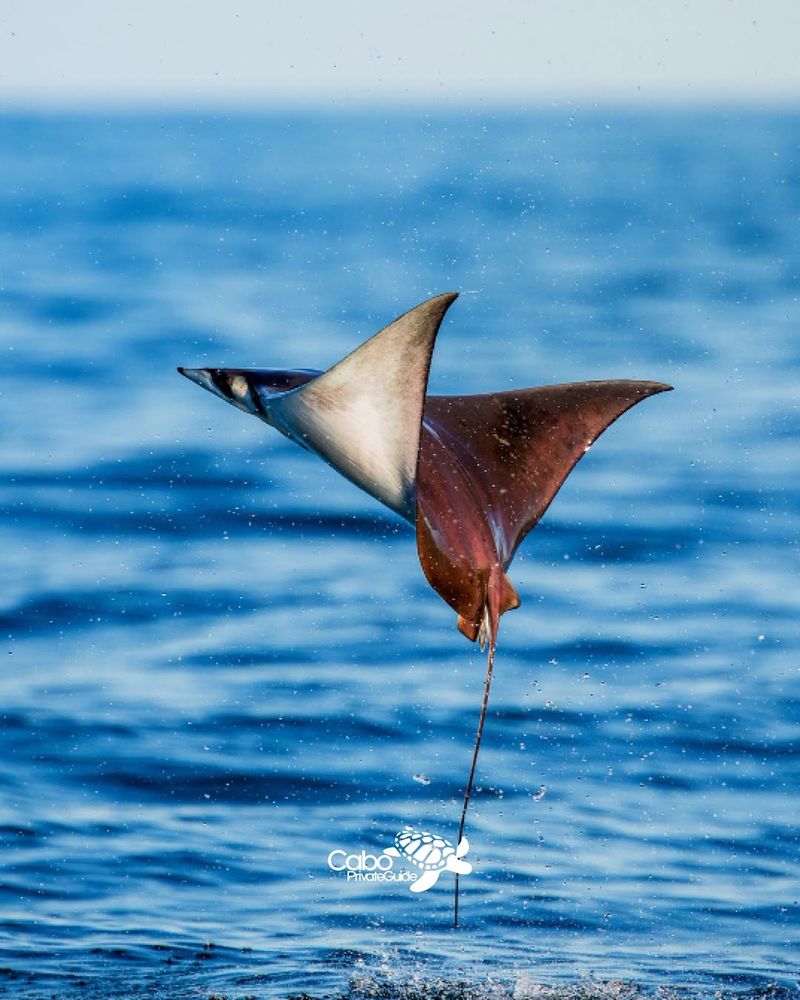
The Mobula Ray, often called the “devil ray,” is known for its stunning aerial displays.
Despite being a marine creature, it can leap several feet out of the water, spinning or flipping in mid-air. Scientists believe this behavior may help with communication, parasite removal, or mating rituals.
Graceful both in water and briefly in the air, the Mobula Ray is a spectacular sight in the open ocean.

